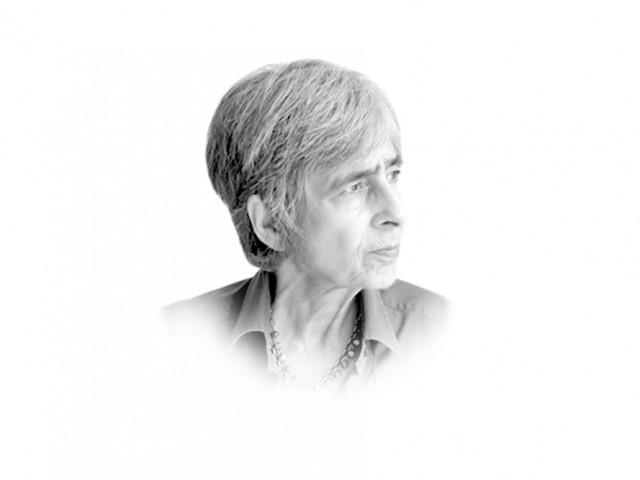Blunders all round
Bans and shutdowns in this era are not the way to tackle gross non-professionalism and stupidity.

amina.jilani@tribune.com.pk
In his 1991 preface, Niazi records that some “19 journalists and press workers have had their lives brutally snuffed out during the performance of their duty. From January 1965 to November 1991, the total number of attacks on newspaper offices and news-persons (including threats) has reached the frightening figure of 236 cases.” So, as the old biblical saying goes, there is nothing new under the sun. What has happened is that with growing intolerance, bigotry and power (?) of the media, plus the entry of horrific TV news channels with their tendency towards misinformation, disinformation, news mismanagement, sensationalism and occasionally downright lies — and, of course, with the massive upping of a violence-prone national mindset — the incidence of violence against the media has exponentially increased over the sordid years.
Then we come to the ganging up of the various media barons against one another, with the odd exception, which is now at an insufferable peak as it has endured for almost three weeks (at the time of writing). Well, in The Press in Chains, fully and in detail is recorded the sorry saga of the Civil and Military Gazette (CM&G) in 1949 when Kipling’s old newspaper was mortally attacked. It had published a report from its New Delhi correspondent stating that a compromise formula on Kashmir was being discussed by the Indian and Pakistani governments. The latter issued a denial. Subsequently, a joint editorial by 16 newspapers of the honourable Pakistani press was published on one day under the heading “Treason”. In the considered view of the 16 publications, the CM&G had ‘committed an act of treason against our state’. They demanded that ‘immediate penal action’ should be taken and the newspaper be suspended. The demand was met by the government — given ‘top priority’ and the paper was suspended for six months. It never recovered, it died.
What has happened since this April 19 this year? Well, as one international headline had it: “Battle lines forming in Pakistani press”. Is this what our media moguls and their cohorts want — a war of words? Hardly flattering to themselves! As a majority has agreed, the action — thoughtless and stupid and unethical — by Hamid Mir’s media group is justifiably condemnable. As one of our journalists put it writing in The Guardian, “As any trained journalist will tell you, we need two sources before we can tell you a story”.
What were the two sources of the ‘trained’ journalists of the Geo lot? They were not there. So, the ISI has every reason to be outraged — but as is the local norm, the rage was overdone. Bans and shutdowns in this era are not the way to tackle gross non-professionalism and stupidity. And support for media freedom does have a limit as our ponderous grim-faced prime minister should have realised before trotting off, bouquet-laden, to Mir’s hospital bed. The battle lines need to be doused, not reinforced. Hang on for the judicial commission and its finding — though it is highly unlikely that it will actually ‘find’ anything.
As another international sub-headline put it, is all that is going on “A subplot of a larger tussle in Pakistan”? The army, and that includes the ISI, was already smarting from the inane prolongation of the Musharraf affair. For the army to be accused of having been headed and led for a decade by a traitor, and all the other names by which Musharraf has been dubbed, is not easy for the rank and file to swallow.
Published in The Express Tribune, May 10th, 2014.
Like Opinion & Editorial on Facebook, follow @ETOpEd on Twitter to receive all updates on all our daily pieces.















COMMENTS
Comments are moderated and generally will be posted if they are on-topic and not abusive.
For more information, please see our Comments FAQ